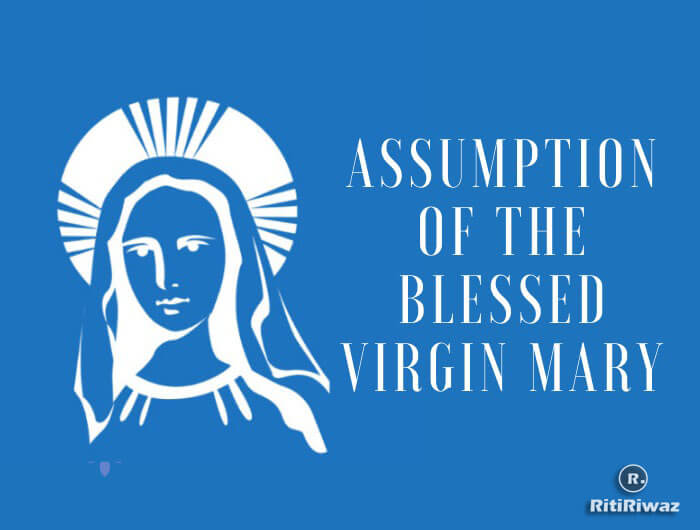The Assumption of Mary – 15 August

The 15th of August marks the Catholic celebration of the ‘Assumption of Mary,’ – it is even called the ‘Easter of the summer‘ in some parts of Europe. According to their belief that rather than dying a mortal death, Mary (as) was assumed into heaven at the end of her life.
Countries around the world mark the occasion in ways unique to their cultures and customs; for example, following one belief that rather than finding a body, flowers were discovered at the grave of Mary (as), those celebrating in Poland dress using flowers and herbs as decoration. In Italy, colorful processions are seen in the streets. In Greece, numerous festivals and events are hosted throughout the country. In Spain, celebrations last from the 11th to the 15th of August, ending with a grand celebration in the streets of Madrid. In Croatia, more than 50,000 Catholics gather each year to celebrate the occasion at a large Marian shrine
The Assumption refers to the body and soul ascension of Mary, the mother of Christ, into heaven at the end of her life. In the Eastern Orthodox tradition, it is known as the Dormition of the Theotokos (the falling asleep of the Mother of God) – marking her death (‘falling asleep’) and resurrection before being taken up to heaven. By either name, the day marks Mary’s triumph over earthly existence as she is transported body and soul into heaven by her son, Jesus Christ.
Observed as a holy day of obligation by Catholics and as a public holiday in some countries. Devotees consider the Feast of the Assumption as the Holy Mother’s “heavenly birthday” and this is not a day of mourning for her loss, but a celebration of joy for the union of the mother with her beloved son.
Assumption of Mary History
This feast commemorates two events – the departure of Mary from this life and the assumption of her body into heaven.
There is very little evidence related to the assumption of Mary in the earliest gospels and traditions. The earliest known references to the Assumption of the Virgin Mary appear in the 4th (or possibly late 3rd) century in Liber Requiei Mariae (The Book of Mary’s Repose), and in the writings of a Bishop Meliton. Some of the Church Fathers believed that the Blessed Virgin Mary (BVM) was assumed while still alive, but the majority view was that she was assumed after she had died. Both views are permitted under the infallible definition of Pius XII, which is ambiguous.
St. John of Damascus (d. AD 755) relates a tradition where, during the Council of Chalcedon (AD 451), the emperor Marcian and his wife wished to find the body of Mary. He tells how all the apostles had seen her death, but her tomb was empty upon inspection.
Festivals commemorating the death of Mary were common from the 5th century onwards, although the exact dates were never universally fixed. In AD 556 the patriarch of Alexandria, Theodosius, attests to two popular Marian feasts in Egypt: Mary’s death (January 16) and Assumption (August 9). Theodosius understood Mary to have died before being assumed, and according to the feast dates in Egypt at the time, she was assumed 206 days after her death. In AD 600, the emperor Mauricius decreed that the Assumption was to be celebrated on August 15. Soon, the Church in Ireland adopted this date, and it was later introduced in Rome.
As devotion of Mary grew in the West, there was more pressure for the Catholic Church to define the exact nature of the Assumption. Pope Pius did this in 1950, in terms that are still rather general, and can be accepted by Western Catholics, Eastern Catholics, and Eastern Orthodox.
How the day is celebrated
There are celebrations with parades and festivals in Mary’s honor. Thousands of Christians come to churches to take part in the procession of the cross, led by miraculous icons. People express their faith this way and ask the Virgin Mary for intercession before the Lord, praying for the salvation of their souls. In many places, you will find fairs, parades with marching bands, kids’ games, road races through the public streets, dancing, costume contests, and general fun family events.






